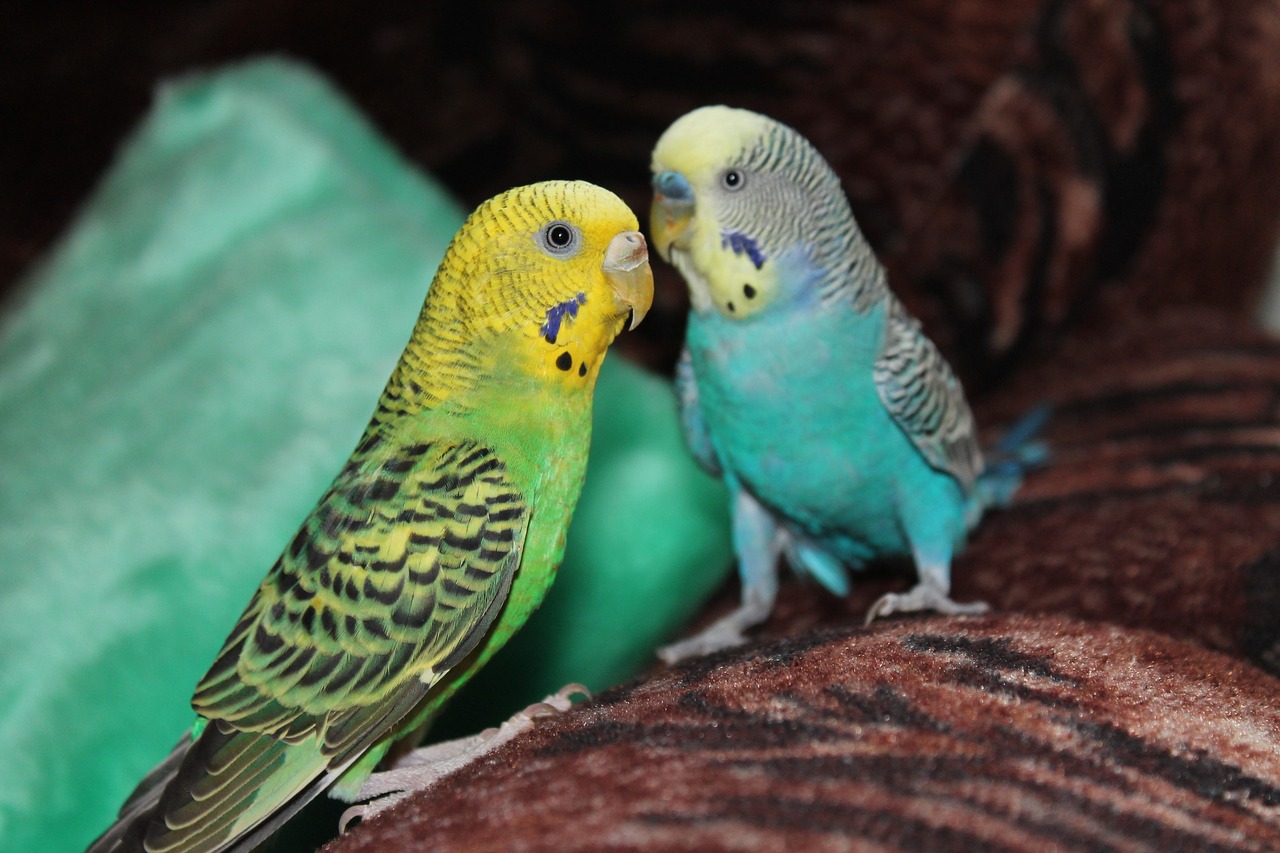Wavy parrots, also known as budgerigars or budgies, are one of the most popular pet birds worldwide. Their vibrant colors, playful personalities, and ability to mimic human speech make them a favorite among bird enthusiasts. But one of the most important questions potential owners ask is: How long do wavy parrots live?

The lifespan of a budgerigar depends on various factors, including genetics, diet, environment, and healthcare. With proper care, these small parrots can live much longer than many people expect.
In this comprehensive guide, we will explore:
✅ The average lifespan of wavy parrots
✅ Factors that affect their longevity
✅ How to extend their life expectancy
✅ Common health issues and prevention tips
1. Average Lifespan of Wavy Parrots
The lifespan of a wavy parrot varies depending on whether it is wild or domesticated:
🔹 In the wild: 4–6 years
🔹 As a pet (with basic care): 5–8 years
🔹 With excellent care: 10–15 years
🔹 Record lifespan: Over 20 years
Some budgies have been known to live well beyond 15 years, but this is rare and requires exceptional care.
2. Factors Affecting the Lifespan of Wavy Parrots
Several factors determine how long your budgie will live:
A. Genetics and Breed
🔹 Lineage matters: Pet budgies bred in captivity can have weaker immune systems compared to wild budgies.
🔹 Selective breeding issues: Some budgies are prone to genetic disorders, especially those bred for unique colors.
B. Diet and Nutrition
Proper nutrition is one of the biggest factors in a budgie’s lifespan. Many owners mistakenly feed an all-seed diet, which can lead to nutritional deficiencies.
✔ Best foods for a long life:
- Pellet-based diet (specially formulated for budgies)
- Fresh vegetables (carrots, bell peppers, spinach)
- Limited fruit (apples, berries, bananas – in moderation)
- Occasional protein (boiled egg, cooked lentils)
✖ Foods to avoid:
- Avocado (toxic to birds)
- Chocolate and caffeine
- Sugary or salty foods
- Onion and garlic
C. Cage Size and Environment
🔹 Bigger is better: A small cage can limit movement and cause stress.
🔹 Ideal cage size: At least 18x18x24 inches for one budgie, but larger is recommended.
🔹 Proper perches: Include natural wood perches to prevent foot problems.
🔹 No overcrowding: Too many birds in a small cage leads to stress and aggression.
D. Exercise and Mental Stimulation
Budgies are active birds that require daily exercise to stay healthy.
✔ Flying time: At least an hour outside the cage every day in a safe area.
✔ Toys and enrichment: Rotate toys regularly to prevent boredom.
✔ Social interaction: Budgies need either companionship from humans or another bird to thrive.
E. Preventing Stress and Loneliness
Budgies are social birds and can become stressed or depressed if left alone for long periods.
✔ Ideal setup: Either keep two budgies together or spend time daily with a single bird.
✔ No sudden changes: Avoid moving their cage frequently or introducing new objects abruptly.
✔ Provide background noise: Soft music or bird sounds can help if they are home alone.
F. Veterinary Care and Disease Prevention
Many budgies suffer from preventable diseases due to a lack of vet care.
✔ Annual check-ups: Visit an avian vet at least once a year.
✔ Signs of illness to watch for:
- Fluffed-up feathers
- Loss of appetite
- Labored breathing
- Sitting at the bottom of the cage
✔ Common health problems in budgies:
- Respiratory infections (caused by poor air quality or cold drafts)
- Mites and parasites (can cause feather loss and itching)
- Tumors (some budgies are genetically prone to them)
- Liver disease (often due to a poor diet high in fat)
Early detection greatly increases the chances of successful treatment.
3. How to Help Your Budgie Live a Long and Healthy Life
Want your budgie to reach 15+ years? Follow these best practices:
A. Provide a Nutritionally Balanced Diet
Replace seed-heavy diets with pellets, fresh veggies, and occasional protein.
B. Keep Their Living Environment Clean
✔ Clean food and water dishes daily.
✔ Change cage liner at least twice a week.
✔ Deep-clean the cage once a month.
C. Ensure Plenty of Exercise
✔ Allow at least one hour of free flight outside the cage daily.
✔ Provide ladders, swings, and different types of perches.
D. Give Social Interaction
✔ Spend at least 30–60 minutes a day interacting with your budgie.
✔ If you are often away, consider getting a second budgie.
E. Watch for Signs of Illness
✔ Look for changes in behavior, appetite, or droppings.
✔ Schedule regular vet visits for early disease detection.
F. Avoid Harmful Household Hazards
✔ No fumes: Budgies are sensitive to smoke, aerosol sprays, and non-stick cookware fumes.
✔ No toxic plants: Research houseplants to ensure they are bird-safe.
4. How Do You Know If Your Budgie Is Aging?
As budgies age, they may show subtle signs of getting older:
✔ Less active or playful
✔ More time spent sleeping
✔ Duller feather colors
✔ Changes in appetite
Older budgies need more warmth, softer foods, and extra comfort in their cage.
5. The Oldest Budgerigar on Record
The Guinness World Record for the oldest budgie belongs to Charlie, a budgerigar from England, who lived 29 years and 2 months!
His long life was attributed to:
✔ A nutritious diet
✔ A stress-free environment
✔ Plenty of social interaction
Final Thoughts: How Long Will Your Wavy Parrot Live?
The lifespan of a wavy parrot depends largely on how well you care for them. While the average is 5–8 years, a budgie given excellent nutrition, regular vet check-ups, and a stimulating environment can live 15 years or more.
Are you ready to help your budgie live a long and happy life? Start with proper care, a good diet, and lots of love! 💙🐦




























